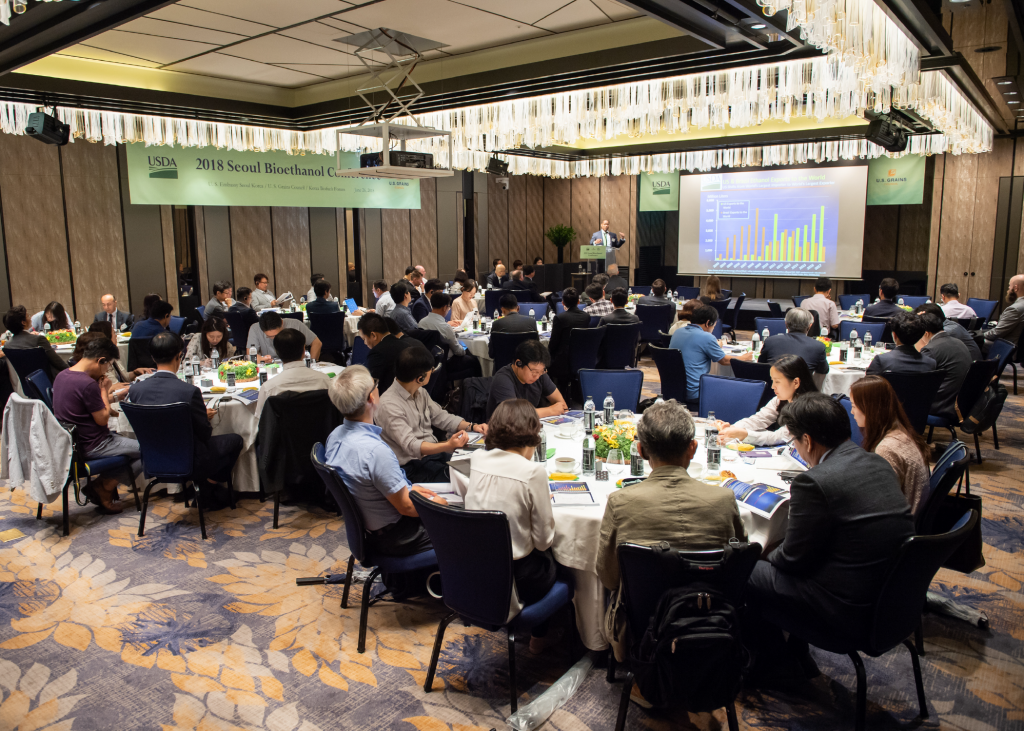Asia-Pacific countries vary widely in their approach to using ethanol for fuel. Some markets have well-established domestic industries and strong ethanol policies with a role for trade. Others have no national policy and use ethanol solely for industrial purposes.
The Ethanol Summit of the Asia-Pacific, conducted in Minneapolis in May, brought together representatives from countries across this spectrum to collaborate and share their experiences using ethanol. Following the event, the U.S. Grains Council (USGC) and ethanol partners traveled to the Philippines and South Korea in June to follow up on these productive discussions on the benefits of increased global ethanol use.
The Philippines is a burgeoning ethanol market with a growing domestic industry. With a current E10 national ethanol blending mandate, the Philippines uses about 45 percent domestically-produced ethanol and imports the remainder, primarily from the United States.
The country currently ranks as the seventh largest U.S. ethanol market to date in the 2017/2018 marketing year (September 2017-April 2018) with exports totaling 41 million gallons. It has grown into a steady market for U.S. ethanol in recent years, importing nearly 64.9 million gallons of U.S. ethanol in 2016/2017.
In the Philippines, the Council delegation visited ethanol plants and talked with ethanol producers to learn how ethanol is produced and transported in country. The delegation also discussed the country’s plans to increase the national ethanol blending mandate to E20 by 2020, an upward transition that will result in increased domestic ethanol production as well as the potential for additional imports.
“The Philippines continues to serve as a great model for other countries that produce some ethanol, but not enough to meet mandates,” said Brian Healy, USGC manager of ethanol export market development, who participated in the mission. “Policies with a role for trade, like that in the Philippines, support consistent access to ethanol – critical criteria for any country serious about achieving measurable, long-term benefits from an ethanol policy.”
In contrast, South Korea does not currently utilize ethanol in its nearly 3.5 billion gallon annual gasoline market. However, the country does import U.S. ethanol, but only for industrial uses. Still, South Korea currently ranks as the sixth largest U.S. ethanol export market through the first nine months of the 2017/2018 marketing year. Imports of 54 million gallons are up 51 percent year-over-year as competing Brazilian exports have declined.
The Council and the U.S. Department of Agriculture’s Foreign Agricultural Service (USDA’s FAS) recently conducted the third in a series of bioethanol conferences in Seoul to share information about the benefits of ethanol usage and foster continued discussions between Korean stakeholders on how to implement a national ethanol policy.
“South Korea continues to undergo research about ethanol use, however, there has been no other multilateral engagement to learn best practices for developing an effective ethanol policy,” Healy said. “Our goal is to support South Korea in achieving environmental, human health and economic benefits by using ethanol.”
The Council continues to engage with government officials and industry leaders in potential markets like South Korea and established markets like the Philippines. Follow-up activities from the Ethanol Summit of the Asia-Pacific are planned throughout the year, including an ethanol-specific trade mission to the United States this September and the upcoming USDA Agricultural Trade Mission to South Korea in November.
Find more information on the Council’s work with ethanol here.
About The U.S. Grains Council
The U.S. Grains Council develops export markets for U.S. barley, corn, sorghum and related products including distiller’s dried grains with solubles (DDGS) and ethanol. With full-time presence in 28 locations, the Council operates programs in more than 50 countries and the European Union. The Council believes exports are vital to global economic development and to U.S. agriculture’s profitability. Detailed information about the Council and its programs is online at www.grains.org.


